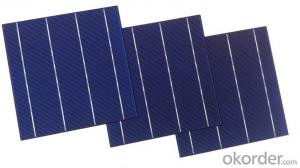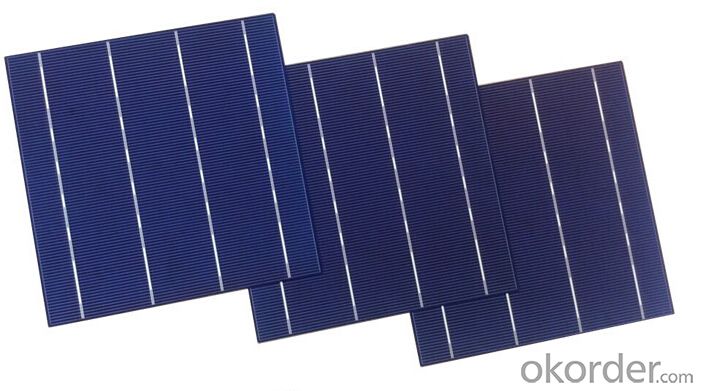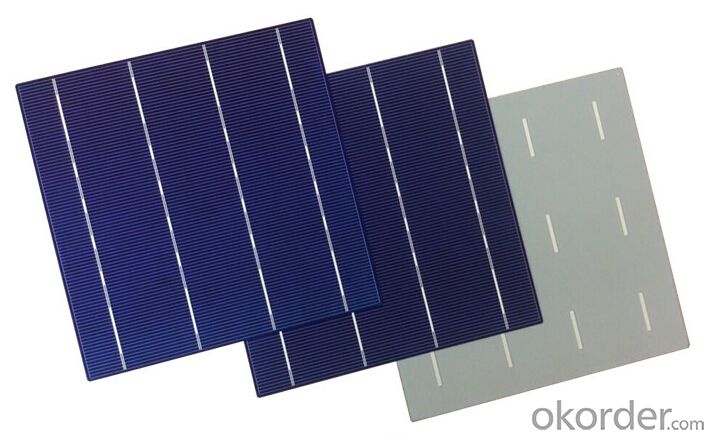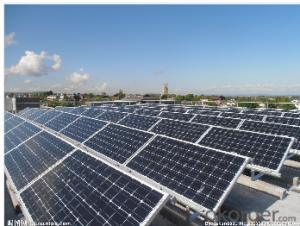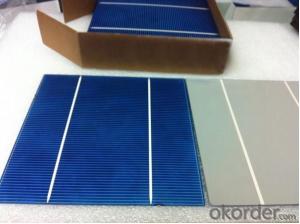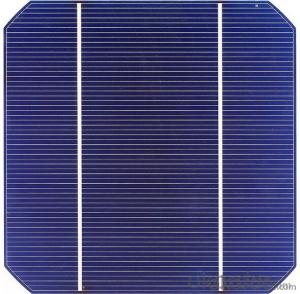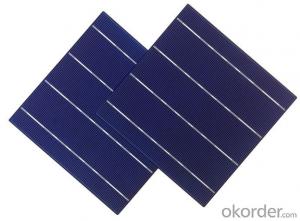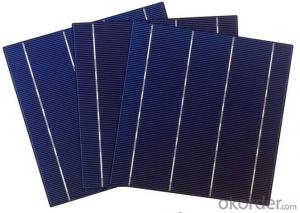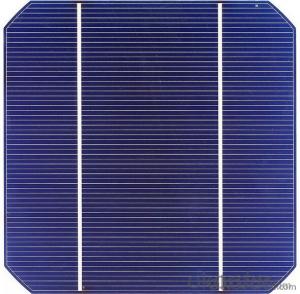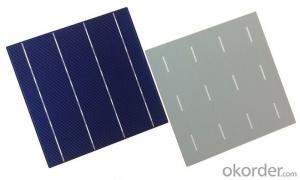Eon Solar Panels - A Grade and B Grade 3BB and 4BB High Efficiency 18.8% Solar Cells
- Loading Port:
- Shanghai
- Payment Terms:
- TT OR LC
- Min Order Qty:
- 10000 watt
- Supply Capability:
- 100000000 watt/month
OKorder Service Pledge
OKorder Financial Service
You Might Also Like
Specification
1.Product Description:
Specifications of Poly Solar Cells
Dimension | 156mm X 156 mm ±0.5mm |
Wafer Thickness | 200um ±30um |
Front(-) | Four 1.1mm wide bus bars(silver) with distance 39mm, Acid texturized surface with blue silicon nitride AR coating. |
Back(+) | 2.4mm wide silver/aluminum soldering pads, aluminum back surface field. |
Temperature Coefficient of Poly Cells
Voc.Temp .coef.%/K | -0.351%/K |
Isc.Temp .coef.%/K | +0.035%/K |
Pm.Temp. coef.%/K | -0.47%/K |
Electrical Characteristic of Poly Cells
Efficiency code | 1720 | 1740 | 1760 | 1780 | 1820 | 1840 | |
Efficiency (min) | (%) | 17.2 | 17.4 | 17.6 | 17.8 | 18.2 | 18.4 |
Pmax | (W) | 4.186 | 4.234 | 4.283 | 4.332 | 4.429 | 4.478 |
Voc | (V) | 0.631 | 0.632 | 0.634 | 0.636 | 0.640 | 0.642 |
Isc | (A) | 8.446 | 8.485 | 8.523 | 8.573 | 8.660 | 8.700 |
Vmp | (V) | 0.525 | 0.527 | 0.529 | 0.531 | 0.535 | 0.537 |
Imp | (A) | 7.973 | 8.035 | 8.097 | 8.160 | 8.280 | 8.340 |
2.Advantages of Poly Solar Cells
1). Tire-1 Solar Cells’ Manufacturer Quality Guarantee. With a complete and sophisticated quality government system, our Quality Management have arrived world’s leading place. Customer can receive Tire-1 Cells Maker’s Quality Standard Products.
2). Trusted Warranty. We can supply trusted after-sales service to our customer. If our cells are found not in conformity to the specification of manufacturer, or should the inspected quantity found in shortage, or should the packing found damaged, the buyer has the right to claim to the seller. The claim, if any, should be presented to seller within 30 days after cargo's arrival date to the port, together with related inspection report and photos issued and provided by a reputable independent surveyor such as SGS.
3). World’s Leading Manufacturer Equipment. We imported the newest and leading production equipment from abroad. Advanced equipment can guarantee the stable quality of cells. Auto production line can also save labor cost which will further cut our production cost.
4). Bulk supply: With the production capacity of 500MW, we can produce large quantity every month. This can satisfy most customer requirement.
3.Usage and Applications of Poly Cells
Solar cells are often electrically connected and encapsulated as a module.
Photovoltaic modules often have a sheet of glass on the front (sun up) side, allowing light to pass while protecting the semiconductor wafers from abrasion and impact due to wind-driven debris, rain, hail, etc. Solar cells are also usually connected in series in modules, creating an additive voltage.
Connecting cells in parallel will yield a higher current;our solar cells have passed IEC Certification.
With high quality and stable quality. Our Cells can greatly improve the performance of Solar Modules.
4.Pictures of Product
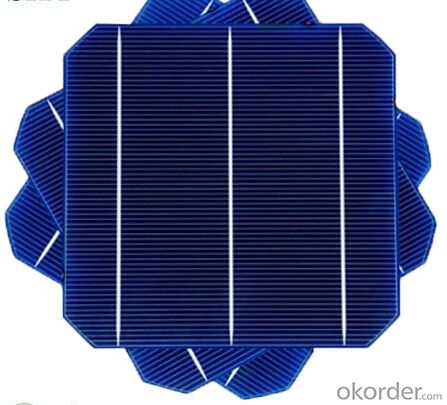
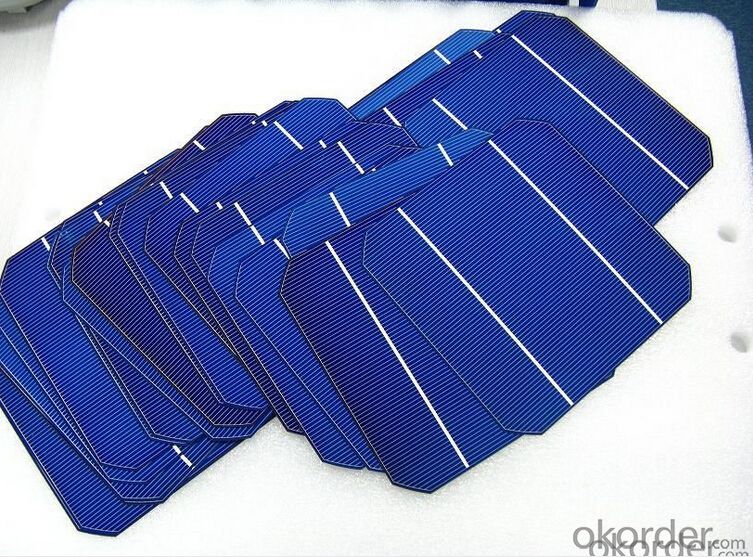
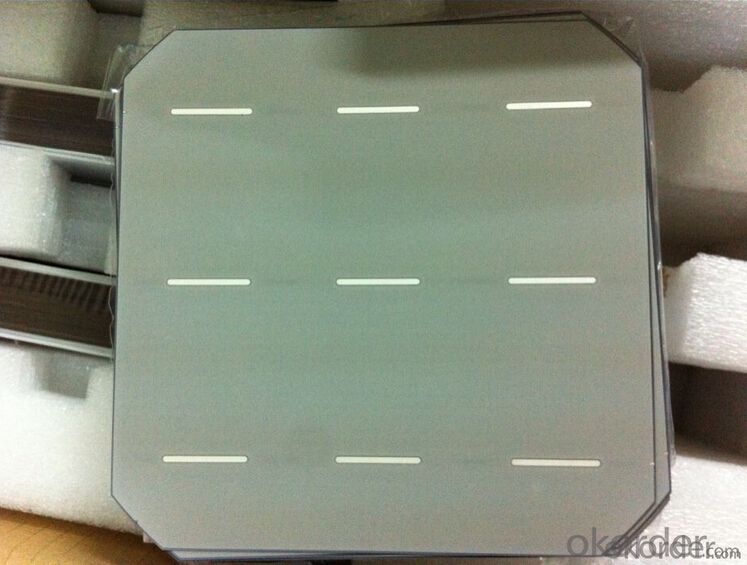
5.Packaging & Delivery of Poly Cells
Carton Box Package and Deliver by air. It should be noticed that it should be avoid water, sunshine and moist.
We have organized several common questions for our clients,may help you sincerely:
6.FAQ
1. What’s price per watt?
A: It’s depends on the quantity, delivery date and payment terms of the order. We can talk further about the detail price issue. Our products is high quality with lower price level.
2. Can you tell me the parameter of your solar cells?
We have different series of cells with different power output, both from c-si to a-si. Please take our specification sheet for your reference.
3. How do you pack your products?
We have rich experience on how to pack the panels to make sure the safety on shipment when it arrives at the destination.
4. Can you do OEM for us?
Yes, we can.
5. How long can we receive the product after purchase?
In the purchase of product within three working days, We will arrange the factory delivery as soon as possible. The perfect time of receiving is related to the state and position of customers. Commonly 7 to 10 working days can be served.
- Q: I have several 6v 4.5a sealed lead acid batteries. I would like to hook one of them up to a solar panel and have it stay charged from the solar panel all the time, but not overcharged. Is there a simple way to do this with an IC or something? I am only a beginner with circuits so I want it to be something very easy to make. Basically, I want it to stay charged all the time so it's available if I need it for a power out or something.Thanks.
- Yes, you can purchase a solar photovoltaic array to keep your batteries charged. You will need a Photovoltaic Cell Panel that produces 27 + watts (6volts x 4.5 amps = 27 watts) at 6 volts of electricity, a Charge Controller that allows only 4.5 amps of power through to the battery and will reduce the amps as the battery nears full charge and shut off the Panel when the battery is fully charged, and a 6v. Battery. Figure you will need a photovoltaic panel capable of producing a minimum of 27 watts if you are going to charge a completely dead 6 v. battery in one day. (with a clear sky). The way the system works is the sunlight strikes the cells on the panel and releases the excess electrons in the cells, they travel along central wires to your battery and charge the battery. When the sun sets, the procedure is reversed and the electrons flow backwards from the battery, into the photovoltaic cells. That is where the Charge Controller is needed. It acts a one way gate and lets the electrons go into the battery, but won't let them go backwards to the Panel. Just set your panel in the sun at the optimum angle for the season and your latitude on earth, connect the charge controller and then the battery, and it will keep your battery charged. Don't waste your money on the small wattage solar photovoltaic systems that claim to keep your battery charged. They simply can't do it unless your battery is in like new condition and is fully charged when they are hooked up. If you battery is a few months old, the small wattage photovoltaic systems can't keep up with the loss of power from sulfation inside the battery.
- Q: How much electricity can a solar panel produce?
- The amount of electricity a solar panel can produce depends on several factors, including the size of the panel, its efficiency, and the amount of sunlight it receives. On average, a standard 300-watt solar panel can generate around 300-400 kilowatt-hours (kWh) of electricity per month under optimal conditions. However, it's important to note that actual electricity production may vary based on location, weather conditions, and other variables.
- Q: Can solar panels be recycled?
- Yes, solar panels can be recycled.
- Q: How do solar panels impact the roofing material's lifespan?
- Solar panels can actually extend the lifespan of roofing materials. They act as a protective layer, shielding the roof from various weather elements like UV rays, hail, and rain, which can cause damage over time. Additionally, solar panels can help regulate the temperature of the roof, preventing excessive heat buildup that can accelerate the degradation of roofing materials.
- Q: The battery is 9ah and the solar panel is 20w
- Yes, certainly. So long as the solar panel's voltage exceeds the voltage of the battery (which is probably going, certainly if it can be a discharged battery, which is lower than 2 volts), then it will recharge the battery. Additionally, a 2 V solar panel can produce bigger than 2 volts. Nevertheless, the rate of charging is more likely to be depdendent on the availabilty of daylight. And of course, the better the capcity of the battery, the longer it takes to cost.
- Q: Can solar panels be damaged by hail or other elements?
- Yes, solar panels can be damaged by hail or other elements. Hailstones can cause cracks or dents in the panels, impairing their functionality. Other elements like heavy rain, strong winds, or debris from storms can also potentially damage solar panels. However, most solar panels are designed to withstand typical weather conditions and are often tested for durability.
- Q: Do I just run the wire from the panel into the charge controller and then to the battery AND can I simultaneously draw energy from the battery while it is being charged by the panel?Is it as simple as hooking it up like that?
- I hope you have some instructions. You need safety switches and fuses in the circuit. What voltage/currents are you running? Don't burn the house down or get electrocuted please. DC can be very dangerous.
- Q: hi guys, i need help, okay lets say i decide to put solar panels near a place where its inhabitated by people, what kinda of environmental factors should i consider? Will the solar panels cause any damage to the enviromnent around it? Will it affect the plant and animals around it? should i consider the weather? its for my class so if u guys can help thankx.
- You would need to consider how much sun your area gets on average. You would need to do a cost/benefit analysis to decide if you will be saving money eventually. Environmentally, it would not affect the plants or animals around it, except those it might block the sun from. Meaning, the grass growing in the shade of the panels will probably die out, but that goes for anything that would cast shade for the majority of the time. Solar panels are simply rechargers for the batteries it's hooked up to. No different than a cell phone charger affects the area, people or plants around it. If it is a worry, make some orgonite and place it around the panels. :)
- Q: Do solar panels require building permits?
- Yes, solar panels typically require building permits. The permitting process ensures that the installation complies with local building codes, electrical regulations, and safety standards. It also ensures that the structure can support the added weight and that the panels are properly installed to maximize efficiency and durability.
- Q: Can solar panels be installed in extreme temperatures?
- Yes, solar panels can be installed in extreme temperatures. Solar panels are designed to withstand a wide range of temperature conditions, including both hot and cold environments. However, extreme temperature conditions may affect the efficiency of the panels, reducing their overall performance slightly.
Send your message to us
Eon Solar Panels - A Grade and B Grade 3BB and 4BB High Efficiency 18.8% Solar Cells
- Loading Port:
- Shanghai
- Payment Terms:
- TT OR LC
- Min Order Qty:
- 10000 watt
- Supply Capability:
- 100000000 watt/month
OKorder Service Pledge
OKorder Financial Service
Similar products
Hot products
Hot Searches
Related keywords
